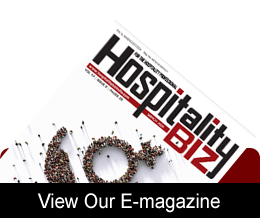The Michelin Guide awarded its first honours for hotels, giving just 24 establishments in France the highest three “keys” rating.
At an event on Monday, April 8 in Paris, the eponymous publication owned by the French tiremaker unveiled its selection of the 189 best places to stay in the nation, awarding them one, two or three key emblems. The company is capitalizing on its renown as an arbiter of fine dining through its annual “star” awards for restaurants—which similarly max out at three stars—to make further inroads into the hospitality sector.
Among the French hotels given the top distinction are two owned by high-end brand juggernaut LVMH—Cheval Blanc Paris and Cheval Blanc Courchevel—as well as 19 others in the capital, the Alps or on the Mediterranean coast. Outside of those regions, three key hotels include Domaine Les Crayeres, Le Royal Champagne and Les Sources de Caudalie in the wine-growing regions of Champagne and Bordeaux.
“What really counts for us is the experience,” said Gwendal Poullennec, international director of the Michelin Guide, in an interview. “It has to be memorable and singular in a way that will give people a feel for local character.”
He cited the Airelles Chateau de Versailles — Le Grand Controle for being inside the castle grounds and Villa La Coste, a 570-acre estate in Provence, for doubling as an “open-air museum” through its exceptional architecture and private art collection, which currently includes works by Damien Hirst, Alexander Calder and Yoko Ono.
The Michelin Guide is entering a crowded market for hospitality rankings that can be confusing for travellers. The move is part of the company’s long-planned bid to capture more of the travel market at a time when global economies and consumer spending have slowed compared with the post-pandemic boom. The decision to start with France reflects the company’s home nation as a hub of luxury hospitality and coincides with the lead-up to the Paris Olympics.
For visitors to the City of Light, the “key” awards may help parse options that look comparable from a distance. For instance, the French government has been granting top hotels the “palace” distinction since 2010 as a way to help consumers identify hotels with both heritage and ample modern luxuries—there are 31 of them in total, mostly in Paris, the Alps and the Cote d’Azur.
While there is some overlap with Michelin’s three-key winners, there are also notable exceptions such as the Hôtel de Crillon, the Royal Monceau and the Peninsula, which all came away from Michelin’s first award ceremony with two keys. Of the 12 Paris “palaces” only five were granted three keys.
According to an official Michelin announcement, one key denotes that a place is “special,” two make it “exceptional” and three “extraordinary.”
“The guide is completely independent,” Poullennec said, adding that it doesn’t take into account whether a hotel is part of a chain or has an administrative classification like a star, or even whether it has a pool, spa, a certain staff-guest ratio or even air-conditioning. The criteria include such considerations as local character, individuality, excellence in architecture and interior design, top service, comfort and a consistent value-for-price. Importantly, Poullennec added, Michelin inspectors are full-time employees and pay all their hotel and travel bills—a departure from the way that other rankings, like the World’s 50 Best Hotels and La Liste, are compiled.
“We’re also not afraid to say a restaurant is really good but travellers should sleep somewhere else,” he said.
Michelin’s first rating of some of the 640 French hotels listed on its site will be followed by similar lists in the US and elsewhere. The French distinctions come five years after the company acquired Tablet Hotels, a booking website for boutique and luxury hotels, for an undisclosed sum. That site’s interface and hotels database now power a portal on the Michelin Guide site where consumers can browse a curated selection of accommodations—many with Michelin-rated restaurants—and make reservations.Source : Mint

